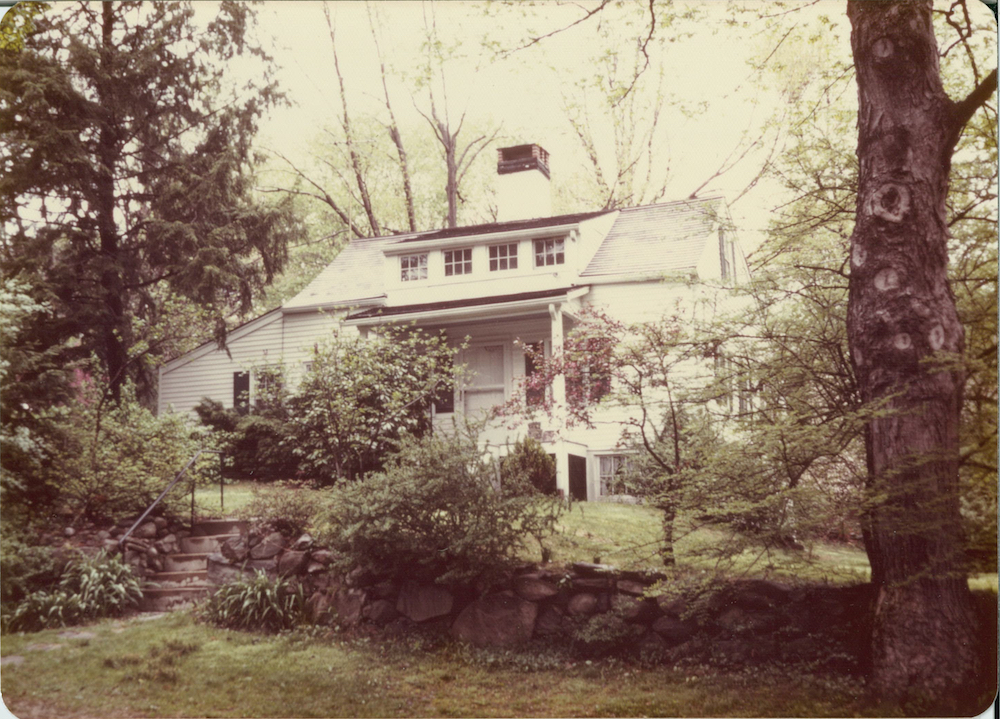23 Talmadge Hill
‘New Canaan Now & Then’ is sponsored by Brown Harris Stevens Realtors Joanne Santulli, Karen Ceraso, Bettina Hegel and Schuyler Morris.
According to the 1850 Census, Gilbert Briggs, the owner of the property that would later become 23 Talmadge Hill, was married to Mary Burtis. Mr. Briggs, who was 25 in 1850, was one of the 344 shoemakers in New Canaan at the time. He and his wife had one child, Stephen, who was born in 1851. Ms. Burtis passed away three years later. In 1856, Briggs remarried Rebecca Scribner, who conveniently lived in the home next door to the Briggs house. It is not clear exactly when Mr. Briggs died, but he passed away sometime before the 1870 Census. His widow later sold the property in order to move closer to town. Stephen became a carpenter and remained in New Canaan until his death in 1933.
On October 29, 1954 the property was purchased by Rhoda E. McCulloch, who lived there until her death on March 15, 1978 at the age of 98 years old. Ms. McCulloch was born in Fremont, Ohio and graduated from Oberlin College in 1910 with a bachelor’s degree in Latin and Greek. Ms. McCulloch was a retired editor and chief of the publications staff of the National Board of the YWCA in the United States. She began her long association with the YWCA in 1911 when she became general secretary of the YWCA in Colorado Springs, Colorado. In 1913, she joined the National YMCA Board in New York City, where in 1922, she became the editor of the “Woman’s Press,” one of the YMCA’s monthly magazines. She held this position until her retirement in 1944. Ms. McCulloch also served at one time on the editorial boards of “Christianity and Crisis” and “The Inquiry” magazines. She was also a past member of the executive committee of the National Conference of Christians and Jews of the World Alliance for International Friendship through the Churches.
McCulloch shared her home in New York City and the New Canaan “spinster’s shack” with Henrietta Roelof. Roelof was the President of the National Peace Council and ex-member of the national board of the YWCA (she served for 39 years) and helped to direct the YWCA’s work in France during World War I. She was a graduate of Lake Erie College and for many years was a leader in the world peace movement. In 1939, when she was about to retire from the YWCA, she asserted “American women were not taking advantage of their opportunity to extend their influence,” adding “On volunteer committees and in social work, women are recognized today as they never were before, but in high places where policy is made they are unknown.”
After Ms. Roelof passed away in 1942 at the age of 62, Lazelle Alway took up residence with Ms. McCulloch that same year. In a letter dated June 23, 1977 from Henrietta Roelof’s sister, Mrs. Frank Verbrugge, Mrs. Verbrugge reports visiting the then 90 year old Ms. McCulloch and the 70 year old Ms. Alway. Ms. McCulloch reminisced about weekend trips that she and Ms. Roelof had made to New Canaan back in the 1920s and 1930s. Before the two owned a car, they would walk to town with their “red wagon,” fill it up with groceries in town, and then make the trek back to Talmadge Hill. The Talmadge Hill station master would store the wagon when they returned to the city for the week. They also reported that as many as six women (all YWCA staffers) would come out to the house on the weekends, which prompted the need for the addition of a two story wing on the back of the house. At different points, some of these women were also short time renters. Mrs. Verbrugge seems to have summed up Ms. Culloch’s and Ms. Roelof’s time in the home with the line “Although YWCA women, church attendance was not a major interest in their lives on weekends on Talmadge Hill – relaxation and friendship were most important.”
When Ms. McCulloch passed away on November 19, 1980 the property was transferred to Lazelle Alway. The house was sold in 1992 and the old home was torn down in 2001.



I would encourage the “New Canaanite” in
writing about past New Canaan citizens. Especially interesting to me are people who lived here in the 1800’s—1700’s, even 1600’s. But information about what New Canaan was like in any past era is welcome to those, like me, who like to see how the area developed.
I second my friend Nancy’s suggestion. These glimpses of New Canaan’s past are fascinating and informative, and I’m sure we all appreciate the efforts of the contributors.
I was fascinated by the domestic arrangements of this group of accomplished women, who apparently thrived without menfolk in their lives. Whether that exclusion was by choice or circumstances, they clearly savored their independence in their “spinster shack.” This wry reference to their marital status shows both self-awareness and a healthy sense of humor.